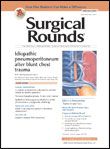Pregabalin for Perioperative Pain after Oculare Surgery
A perioperative dose of pregabalin can reduce pain after an oculoplastic eyelid procedure, according to the results of a small study.

Oculoplastic eyelid procedures can be painful; and since postoperative pain can be somatic, visceral, or neuropathic, multimodal postoperative pain control regimens are smart.
Preemptive analgesia has been employed in many procedures to decrease inflammatory pain related to procedural manipulation, decrease the patient’s pain memory response, and circumvent long-term postoperative pain. In several types of surgery, researchers have determined that a perioperative dose of pregabalin (Lyrica) — a 3-alkylated gamma-amino butyric acid analog that modulates neuropathic pain — reduces postoperative pain.
Researchers from several centers across the United States have conducted a small study in patients undergoing eyelid surgery and determined that pregabalin may be a useful analgesic in oculoplastic surgery, as well. Their study appears online ahead-of-print in Ophthalmic Plastic and Reconstructive Surgery.
The prospective, randomized, double-blind, placebo-controlled trial, enrolled oculofacial plastic surgery patients (N=49) at the University of Colorado Eye Center consecutively. Enrollment began in October 2011 and ended in September 2012. Fifteen minutes to an hour before surgery, the researchers administered either placebo (n=23) or 150 mg pregabalin (n=26).
Study participants recorded pain scores on visual analog scales (range zero to 100) at one to 2 hours, 2 to 4 hours, 8 to 12 hours, 20 to 28 hours, and 36 to 48 hours. They also recorded their acetaminophen doses.
The participants’ average age 68 and they were approximately evenly divided between the sexes.
They underwent a wide range of procedures, including blepharoplasty (18), canthoplasty (11), ptosis repair (15), eyelid retraction repair (2), pentagonal wedge resection (1), and MOHS reconstruction (2).
Participants who received pregabalin reported average pain scores that were 5.5 points lower than those in the placebo group. Pregabalin-treated patient took half as much acetaminophen postoperatively (1.3 g) as the placebo group did (2.6 g).
The researchers noted that pregabalin’s impact was greatest in the first 12 hours postoperatively, but this was not a significant finding. Pregabilin-treated patients experienced more side effects than those in the placebo group, but the difference was also insignificant. Larger studies are needed to replicate these findings.
